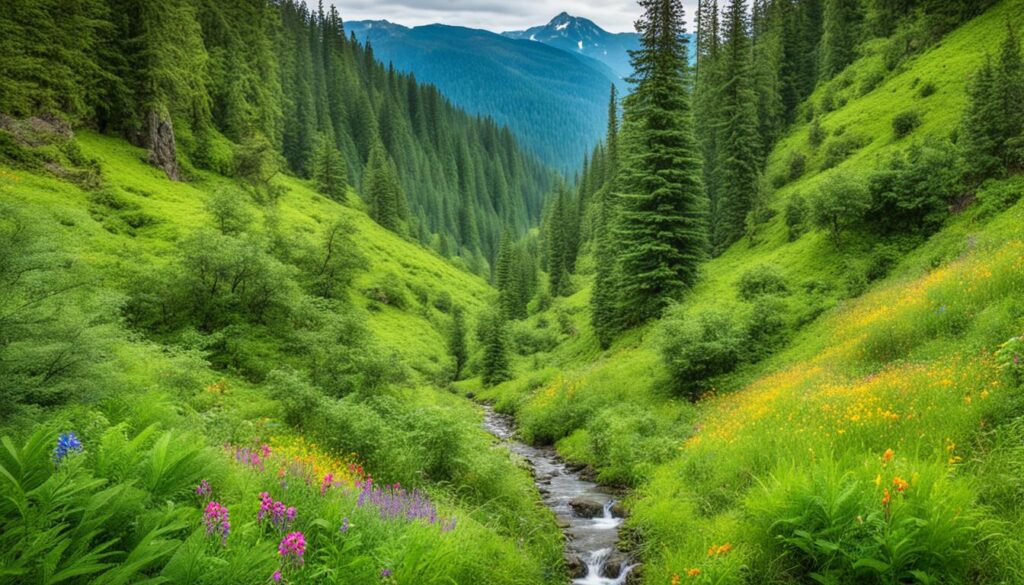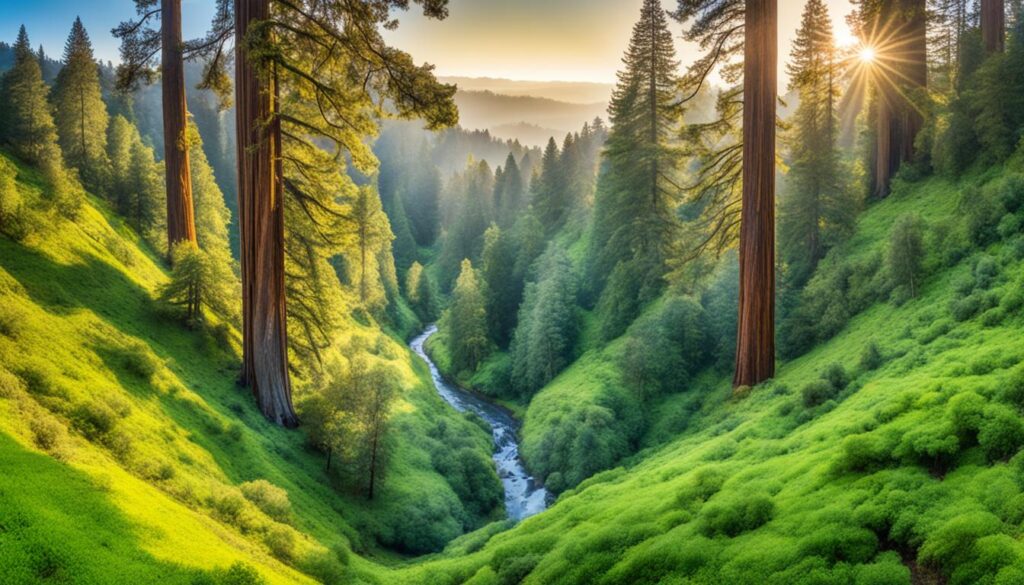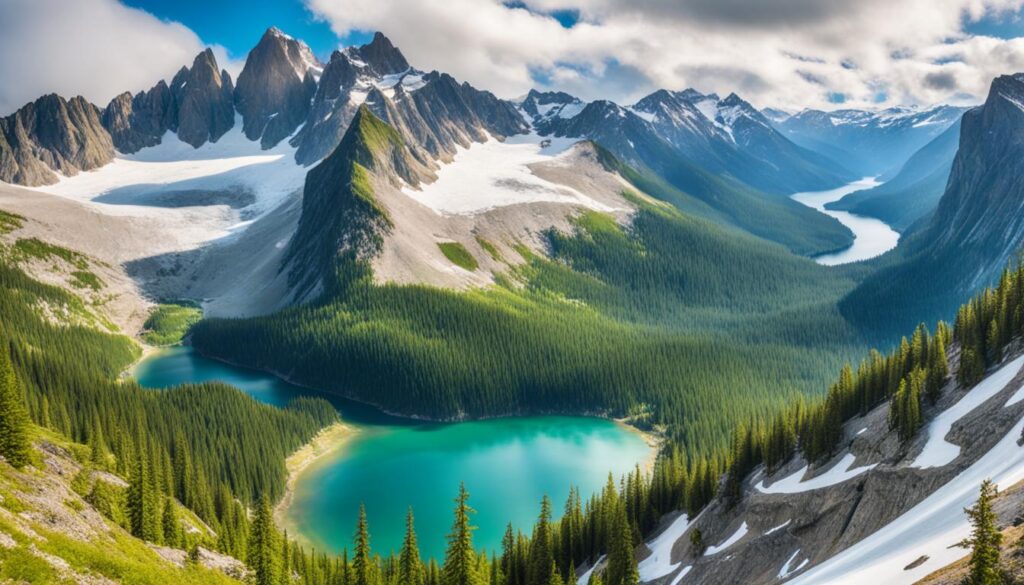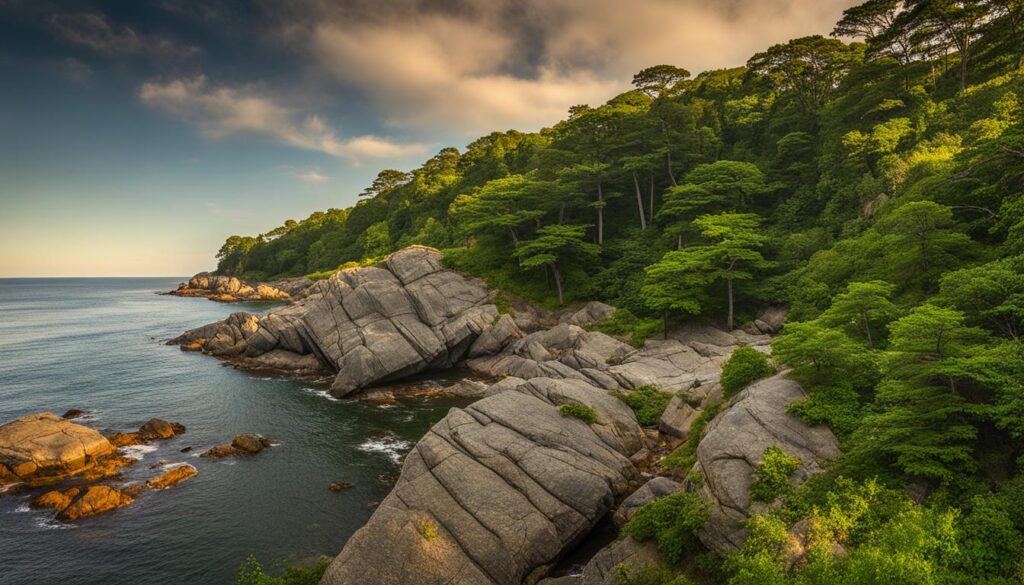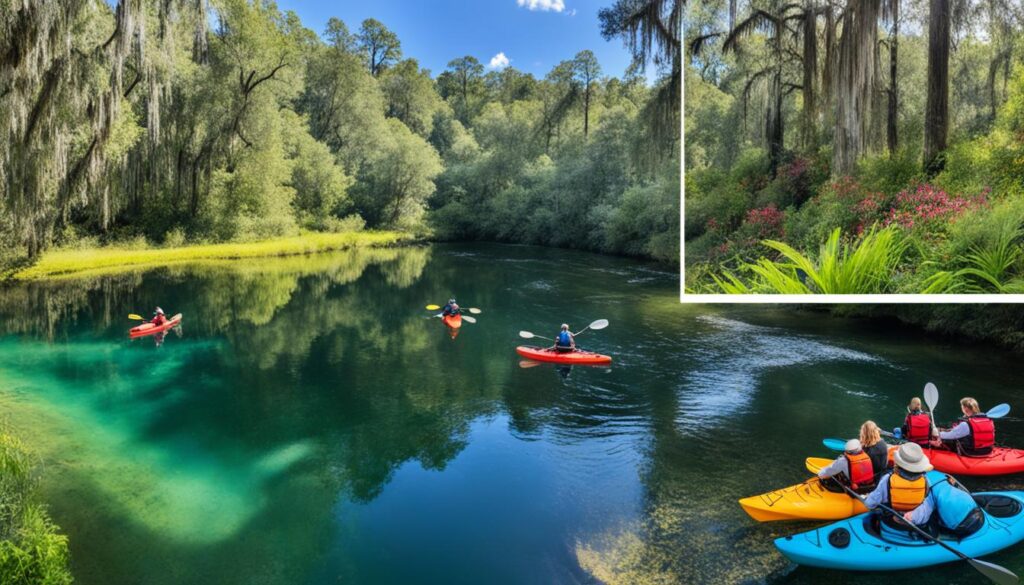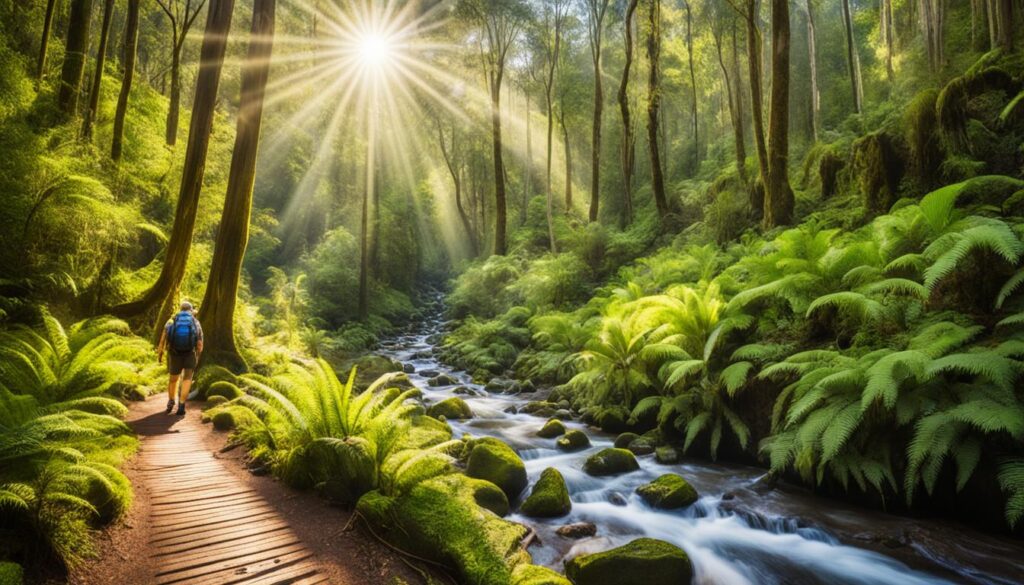Congaree National Park in South Carolina is a true natural gem, known for its incredible biodiversity and stunning scenic beauty. As the largest intact expanse of old growth bottomland hardwood forest in the southeastern United States, this national park offers a rich, immersive experience for outdoor enthusiasts.
Surrounded by the Congaree and Wateree Rivers, the park’s flooded plains nurture an abundance of wildlife and support the growth of national and state champion trees. Whether you’re looking to hike through enchanting trails, paddle along serene waterways, camp amidst the wilderness, or simply marvel at the park’s natural wonders, Congaree National Park has something for everyone.
But the wonders of nature in South Carolina extend beyond Congaree National Park. In fact, there are several state parks nearby that showcase the diverse beauty of the state. From the breathtaking coastal estuary of ACE Basin to the majestic Table Rock Mountain, these state parks offer a range of outdoor activities and opportunities to explore the wonders of South Carolina’s natural landscapes.
So, whether you’re seeking a peaceful retreat surrounded by scenic beauty or an adventure-filled exploration of the great outdoors, South Carolina’s state parks and Congaree National Park are waiting to be discovered.
Key Takeaways:
- Discover the incredible biodiversity and scenic beauty of Congaree National Park in South Carolina.
- Experience hiking trails, canoeing, kayaking, and camping in Congaree National Park.
- Explore the largest intact expanse of old growth bottomland hardwood forest in the southeastern United States.
- Witness the breathtaking champion trees that dominate Congaree National Park.
- Plan your visit to Congaree National Park and nearby state parks to fully immerse yourself in the wonders of South Carolina’s natural landscapes.
Contents
- 1 Congaree National Park: A Wilderness of Trees
- 2 Canoeing and Kayaking Adventures in Congaree National Park
- 3 Camping in and around Congaree National Park
- 4 Wildlife and Nature in Congaree National Park
- 5 Nearby State Parks: Exploring South Carolina’s Natural Gems
- 6 Plan Your Visit to Congaree National Park
- 7 FAQ
- 8 Source Links
Congaree National Park: A Wilderness of Trees
Congaree National Park is renowned for its towering, centuries-old trees that are considered champions in their species. Some of these magnificent trees reach heights of over 150 feet and are up to 300 years old. The park offers a variety of hiking trails that allow visitors to explore the wilderness and witness the park’s scenic beauty up close. From easy walks to more challenging treks, there is a trail for every skill level. The old growth bottomland hardwood forest that blankets the park provides a breathtaking backdrop for outdoor activities and immersing oneself in nature.
“The towering trees in Congaree National Park create a truly awe-inspiring sight. Walking among these ancient giants gives you a sense of reverence for nature’s beauty and resilience.” – Park Ranger, Emily Johnson
Champion Trees
The champion trees of Congaree National Park are a testament to the park’s ecological significance. These trees, such as the towering Loblolly Pine and the majestic Bald Cypress, have been recognized for their exceptional size and age. Walking alongside these champions, visitors can’t help but be humbled by their grandeur and the history they represent.
Hiking Trails
The network of hiking trails in Congaree National Park offers opportunities for visitors to fully immerse themselves in the park’s wilderness. Whether you’re a casual stroller or an avid hiker, there’s a trail that suits your preferences and fitness level. From the tranquil Boardwalk Loop to the challenging Weston Lake Loop, each trail reveals unique aspects of the park’s natural wonders.
Scenic Beauty
The scenic beauty of Congaree National Park is unparalleled. As you wander through the old growth bottomland hardwood forest, you’ll be met with breathtaking vistas at every turn. From the lush greenery to the shimmering reflections in the park’s waterways, the scenery is a feast for the eyes. Don’t forget to bring your camera to capture these unforgettable moments.
Immersed in Wilderness
Congaree National Park offers a true wilderness experience. The park’s vast expanses of untouched nature provide a retreat from the busyness of everyday life. Amidst the tranquil solitude, you can reconnect with the natural world and find solace in the serenity of the old growth bottomland hardwood forest.
Immerse yourself in the wilderness of Congaree National Park and witness the majesty of champion trees, hike through scenic trails, and discover the unrivaled beauty of this old growth bottomland hardwood forest. A visit to Congaree National Park is a journey into nature’s wonders.
Canoeing and Kayaking Adventures in Congaree National Park
One of the best ways to experience Congaree National Park is by canoeing or kayaking along Cedar Creek. The park offers opportunities for paddlers to journey into the heart of the park and explore its waterways. Floating through the forested floodplain, visitors can encounter a diverse range of wildlife, including birds, reptiles, and amphibians. Paddling on Cedar Creek gives visitors a unique perspective of the park and allows them to immerse themselves in the tranquil beauty of Congaree.
If you’re a fan of water adventures and wildlife encounters, don’t miss the chance to paddle through Congaree National Park on a canoe or kayak. As you glide along the crystal-clear waters of Cedar Creek, prepare to be mesmerized by the natural wonders and breathtaking scenery that surrounds you. Keep your eyes peeled for herons gracefully wading through the shallows, turtles basking in the sun, and colorful dragonflies skimming across the surface. It’s an opportunity to connect with nature in a truly immersive way.
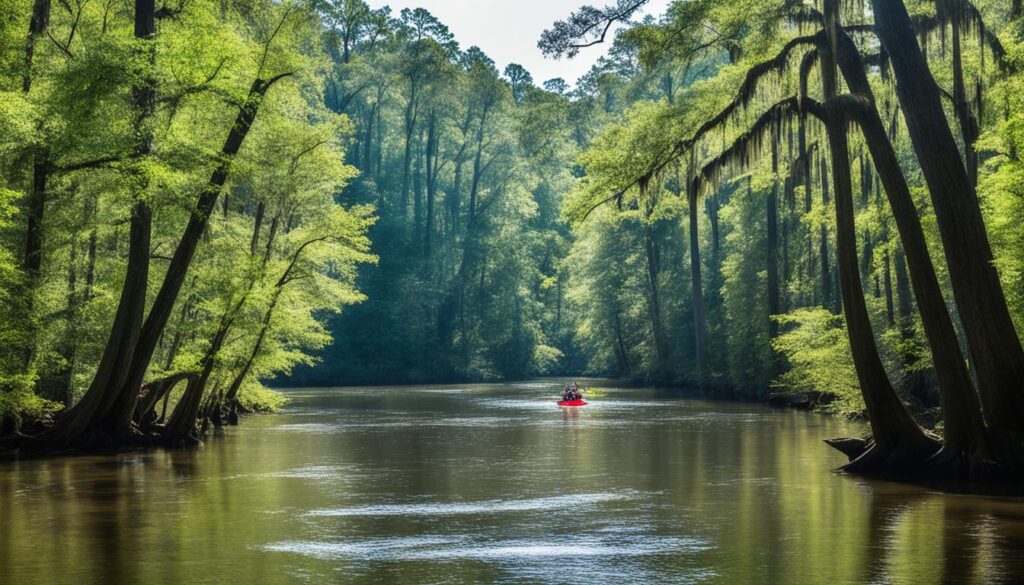
Whether you’re a seasoned paddler or a novice, there are options for everyone. The park provides rental services for canoes and kayaks, making it convenient for visitors to embark on their adventure. If you prefer to bring your own watercraft, there are dedicated put-in and take-out points along the creek. Just make sure to check the park’s regulations and guidelines to ensure a safe and enjoyable experience.
“The serenity and tranquility I experienced while paddling through Congaree National Park were unforgettable. The lush greenery, the soothing sound of water flowing, and the wildlife sightings made it a truly magical experience.” – Jane, avid kayaker.
Exploring the waterways of Congaree National Park is not only a thrilling adventure but also an opportunity to learn about the park’s unique ecosystem. Rangers and park guides often lead interpretive tours, providing insights into the flora and fauna that call Congaree home. They can point out rare plants, share interesting facts about the wildlife, and help you uncover hidden gems along the way.
Incredible Wildlife Encounters
One of the highlights of canoeing or kayaking in Congaree National Park is the chance to observe an incredible diversity of wildlife. The park is teeming with bird species, making it a birdwatcher’s paradise. Keep your binoculars handy to spot majestic herons, colorful woodpeckers, and elusive owls. If you’re lucky, you might even catch a glimpse of the endangered red-cockaded woodpecker, a rare sight indeed.
As you paddle silently through the water, keep an eye on the banks for sunbathing turtles and basking snakes. Listen carefully, and you might hear the haunting call of the barred owl or the melodious song of the prothonotary warbler. Be sure to bring your camera to capture these unforgettable wildlife encounters.
Planning Your Canoeing or Kayaking Trip
If you’re considering a canoeing or kayaking adventure in Congaree National Park, here are a few things to keep in mind:
- Check the park’s website or contact the visitor center to ensure the water conditions are suitable for paddling.
- Wear appropriate attire, including a hat, sunscreen, and quick-drying clothing.
- Bring plenty of water, snacks, and insect repellent.
- Carry a map or GPS device and familiarize yourself with the park’s water trails.
- Respect the park’s rules and regulations, including speed limits, wildlife protection, and noise restrictions.
Embarking on a canoeing or kayaking adventure in Congaree National Park is a memorable experience that allows you to connect with nature, witness remarkable wildlife, and explore the park’s stunning waterways. So grab a paddle, hop in a canoe or kayak, and get ready to create memories that will last a lifetime.
Camping in and around Congaree National Park
For those who want to fully experience the wonders of Congaree National Park, there are camping options available. Whether you prefer the convenience of primitive campgrounds or the ruggedness of the wild backcountry, camping in and around the park provides an opportunity to immerse yourself in nature and witness the sights and sounds of the wilderness.
- Primitive Campgrounds: Congaree National Park offers designated camping areas where visitors can pitch their tents and spend the night surrounded by natural beauty. These primitive campgrounds provide basic amenities and a rustic camping experience. It’s the perfect option for those who prefer a more organized camping setup while still being close to the park’s attractions.
- Wild Backcountry: If you’re seeking a more adventurous camping experience, the park’s wild backcountry is an ideal choice. Camping in the wild backcountry allows you to truly disconnect from civilization and immerse yourself in the untamed wilderness of Congaree National Park. However, it’s important to note that camping in the wild backcountry requires a permit. You can obtain the necessary permit from the park’s visitor center prior to your camping trip.
Regardless of which camping option you choose, camping in and around Congaree National Park offers a unique opportunity to connect with nature and create lasting memories. From stargazing under the night sky to waking up to the chorus of birdsong, camping allows you to fully experience the serenity and tranquility of the park.
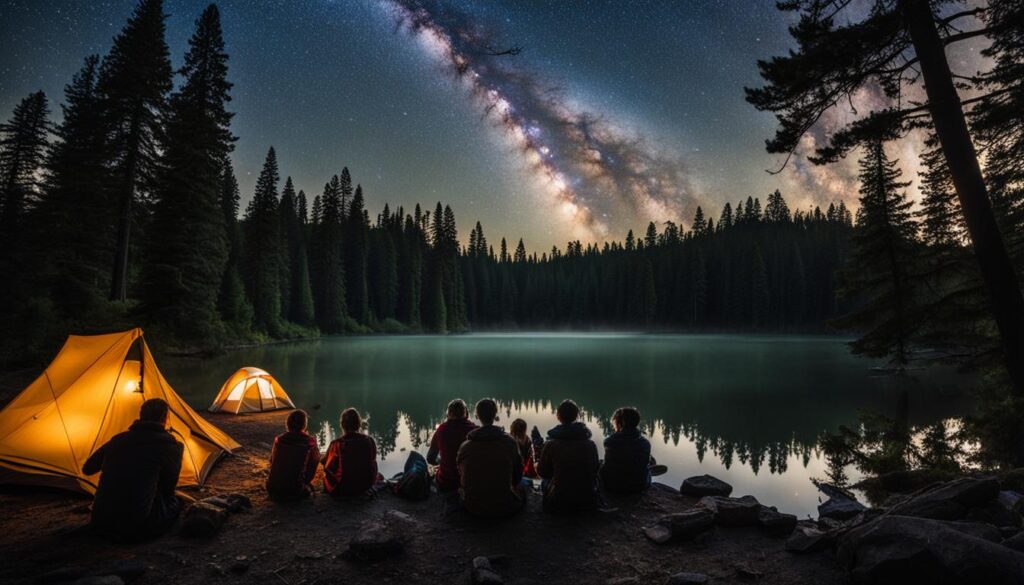
Remember to come prepared with all the necessary camping gear and supplies, including tents, sleeping bags, food, and water. It’s also important to follow the park’s regulations and leave no trace behind, ensuring the preservation of the park’s natural beauty for future visitors.
Wildlife and Nature in Congaree National Park
Congaree National Park is home to a vast array of wildlife, making it a paradise for nature enthusiasts. The park’s biodiverse ecosystem supports a wide variety of flora and fauna, including numerous species of birds, mammals, reptiles, and amphibians. Visitors can spot white-tailed deer, river otters, wild boars, and various bird species during their visit. The park’s natural wonders and rich biodiversity provide endless opportunities for wildlife observation and nature exploration.
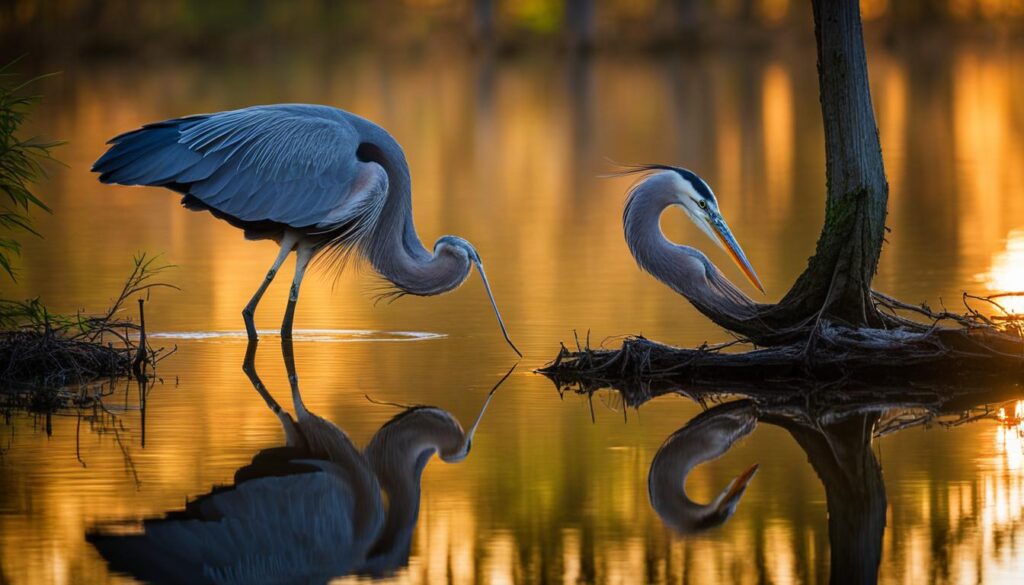
Nearby State Parks: Exploring South Carolina’s Natural Gems
South Carolina is a haven for outdoor enthusiasts, offering a plethora of state parks teeming with natural beauty and exciting outdoor activities. These state parks showcase the diverse landscapes of South Carolina, from stunning coastal estuaries to majestic mountains.
Ace Basin State Heritage Preserve
Located along the coast, the Ace Basin State Heritage Preserve is a coastal estuary that encompasses over 217,000 acres of diverse ecosystems. It is a paradise for fishing enthusiasts, birdwatchers, and nature lovers. Explore the tidal marshes, paddle along the serene waterways, and witness an abundance of wildlife in their natural habitats.
Table Rock State Park
Nestled in the picturesque Blue Ridge Mountains, Table Rock State Park offers breathtaking panoramic views and exhilarating hiking trails. Lace up your boots and embark on the challenging Table Rock Trail, which rewards hikers with stunning vistas at the summit. The park is also a popular destination for camping, fishing, and swimming in the refreshing mountain streams.
Caesars Head State Park
Perched atop the Blue Ridge Escarpment, Caesars Head State Park offers visitors breathtaking views of the surrounding valleys and mountains. Follow the Raven Cliff Falls trail to witness the mesmerizing cascade of water plunging down the rugged cliffs. With its extensive trail network, this park is a favorite among hikers and nature enthusiasts.
Myrtle Beach State Park
For those seeking a coastal retreat, Myrtle Beach State Park is the perfect destination. With its pristine beaches, diverse ecosystems, and nature trails, the park offers a variety of recreational activities. Take a leisurely stroll along the boardwalk, enjoy birdwatching in the maritime forest, or simply relax on the beach and soak up the sun.
Huntington Beach State Park
Huntington Beach State Park is a nature lover’s paradise, renowned for its abundant birdlife and ecological significance. Explore the park’s vast saltmarsh and freshwater lagoon, home to a wide variety of birds, including herons, egrets, and wood storks. Don’t miss the opportunity to visit Atalaya Castle, the former winter home of the renowned sculptor, Anna Hyatt Huntington.
Whether you’re seeking natural serenity or thrilling outdoor adventures, South Carolina’s state parks offer something for everyone. From hiking through picturesque mountains to immersing yourself in the tranquility of coastal estuaries, these natural gems provide endless opportunities to connect with nature and create lasting memories.
Plan Your Visit to Congaree National Park
When planning your trip to Congaree National Park, it’s important to gather all the necessary visitor information. The park operates within specific hours and seasons, so it’s advisable to check the current conditions and alerts before your visit. This will ensure that you have the most up-to-date information regarding park accessibility and any potential closures.
Please note that certain activities within Congaree National Park may require permits. If you’re planning to camp in the wild backcountry, make sure to obtain the necessary permit from the park’s visitor center. Additionally, if you prefer camping in the park’s primitive campgrounds, it is highly recommended to make reservations in advance to secure your spot.
Before your visit, familiarize yourself with the park’s rules and regulations, along with safety guidelines. This will help ensure that you have a safe and enjoyable experience. Congaree National Park is a remarkable natural treasure, and careful planning will allow you to fully appreciate its breathtaking beauty and remarkable biodiversity.
FAQ
What makes Congaree National Park unique?
Congaree National Park is the largest intact expanse of old growth bottomland hardwood forest in the southeastern United States. It is home to national and state champion trees and boasts incredible biodiversity.
What outdoor activities can I do in Congaree National Park?
Visitors can enjoy hiking on the park’s diverse trails, canoeing and kayaking on Cedar Creek, camping in primitive campgrounds or the wild backcountry, and fishing in certain areas of the park.
What wildlife can I expect to see in Congaree National Park?
Congaree National Park is home to various wildlife species, including white-tailed deer, river otters, wild boars, and numerous bird species. The park’s biodiverse ecosystem provides ample opportunities for wildlife observation.
What are some nearby state parks in South Carolina?
South Carolina offers several breathtaking state parks, such as Angel Oak in Charleston, Table Rock Mountain near Greenville, and the ACE Basin, a coastal estuary that offers a range of recreational activities.
Can I go camping in Congaree National Park?
Yes, camping is available in the park’s primitive campgrounds or in the wild backcountry. However, camping in the wild backcountry requires a permit, which can be obtained from the park’s visitor center.
What should I know before visiting Congaree National Park?
It is important to check the park’s operating hours and seasons, as well as any current conditions and alerts. Permits may be required for certain activities, and reservations may be necessary for camping in the park’s primitive campgrounds. Familiarize yourself with the park’s rules, regulations, and safety guidelines before your visit.
